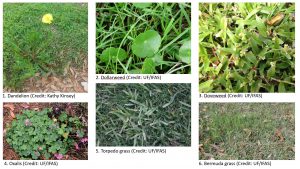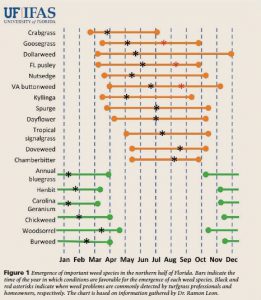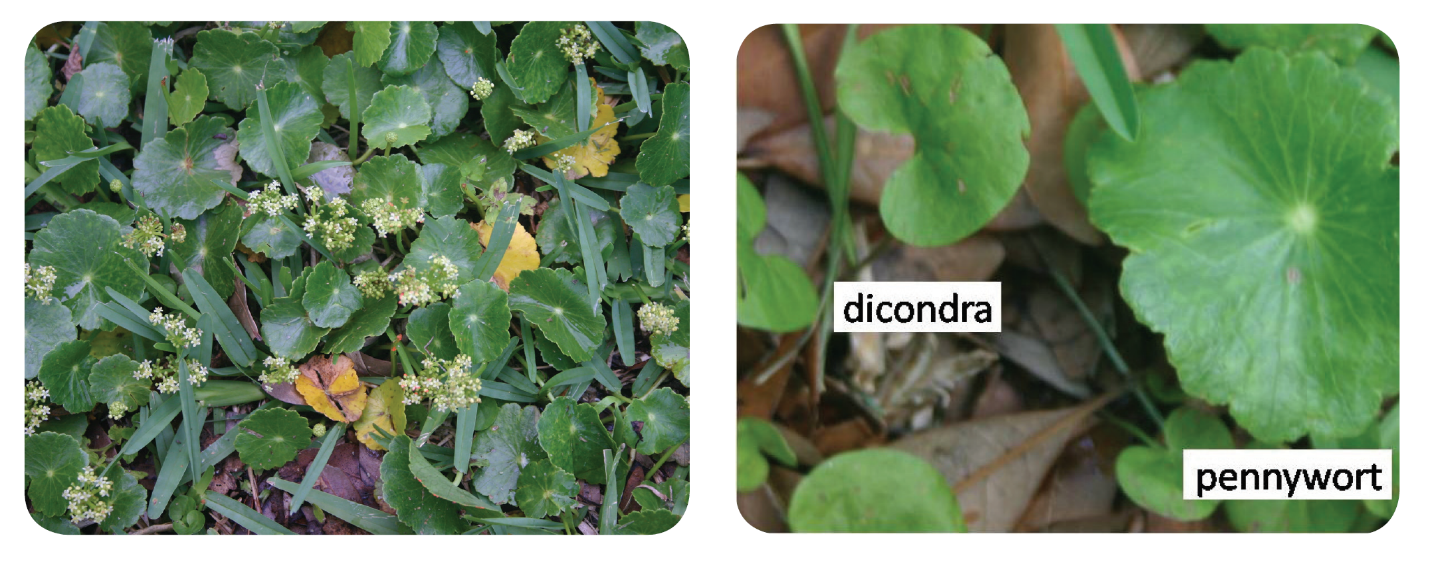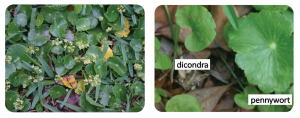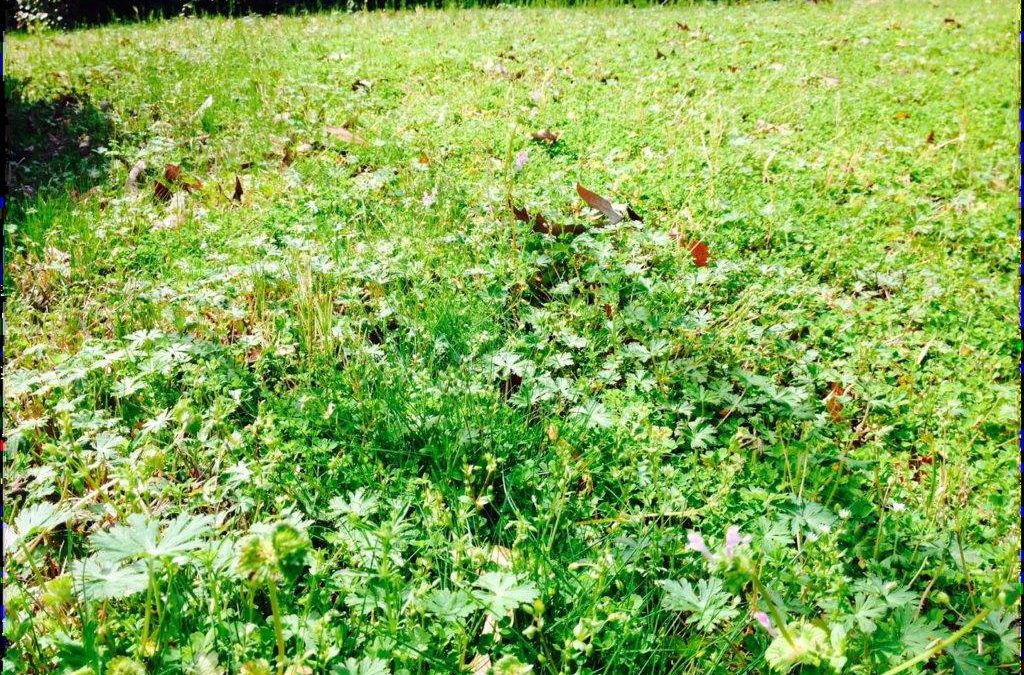
Gardening in the Panhandle LIVE Program Summary: Weeds – February 4, 2021
Gardeners worldwide and throughout time have bemoaned weeds. In Florida, we get to enjoy weeds all year long! Our February Gardening in the Panhandle (GIP) Live episode focused on weeds and weed control. Many homeowners are interested in ways to control weeds and UF/IFAS Extension and your local extension agents are here to help. The following is a summary of the topics we discussed and links for more research-based information on weeds.
What is a Weed?
Many folks come to the extension office holding a plant and ask, “Is this a weed”? Well, whether it is a weed or not is up to the individual, as the only definition for a weed is “a plant out of place”. Bermudagrass and Oxalis are good examples of plants that some try to grow while others try to kill. One person’s weed is another’s wildflower! However, to be clear, plants classified as invasive by UF/IFAS and governmental entities are officially weeds. There are resources to help identify several common plants that are generally considered weeds by most homeowners and landscapers.
Weed ID Links
- Florida Weeds: https://sfyl.ifas.ufl.edu/lawn-and-garden/florida-weeds/
- Edible Weeds: https://content.ces.ncsu.edu/extension-gardener-handbook/6-weeds
- Identifying Weeds: Virginia Tech: https://weedid.cals.vt.edu/ and NC State: https://www.turffiles.ncsu.edu/weeds-in-turf/
- Weeds of Southern Turfgrass: http://ifasbooks.ifas.ufl.edu/p-150-weeds-of-southern-turfgrasses.aspx
How to Prevent Weeds?
There are some general gardening practices that can help prevent weeds so there is less of a need to control them. A lawn that is healthy is less likely to be invaded by weeds and the use of mulch can greatly reduce weed growth in planting beds. Other practices, like the placement of weed fabrics/cloths are less effective and/or less practical in many garden situations.
Weed Prevention Links
- Mulching Guidelines: https://ag.umass.edu/home-lawn-garden/fact-sheets/mulching-weed-management-in-urban-landscape
- FYN Handbook – Principle #s 1, 2, 3, 4, 6: https://ffl.ifas.ufl.edu/materials/FYN_Handbook_2015_web.pdf
- Consider Landscape Fabric Carefully: http://blogs.ifas.ufl.edu/escambiaco/2016/08/12/consider-landscape-fabric-carefully-2/
How to Control Weeds?
Once you know and/or decide that what you have is a weed and that it needs to be dealt with, then you have to consider your control options. Prevention, as mentioned above, is key but sometimes you may need to use other methods of control, such as physical, mechanical, and/or chemical means. With chemical weed control, it is important to always read and follow the product label.
Weed Control Links
- Weed Management Guide for Florida Lawns: https://edis.ifas.ufl.edu/ep141
- Weed Control in Planting Beds: https://edis.ifas.ufl.edu/ep523
- Non-Chemical Weed Control: https://edis.ifas.ufl.edu/hs1170
- Summer Annual Weed Control Timeline: https://sfyl.ifas.ufl.edu/media/sfylifasufledu/escambia/horticulture/Summer-Annual-Lawn-Weed-Control-Timeline.pdf
- Winter Annual Weed Control Timeline: https://sfyl.ifas.ufl.edu/media/sfylifasufledu/escambia/horticulture/Winter-Annual-Lawn-Weed-Control-Timeline.pdf
- Florida Homeowner Herbicide Guide: https://edis.ifas.ufl.edu/pdffiles/EP/EP57500.pdf
- National Pesticide Information Center: http://npic.orst.edu/
- Glyphosate Alternatives: https://edis.ifas.ufl.edu/ep580
- Pesticide Use Around Pets: http://npic.orst.edu/health/pets.html
Specific Weed Recommendations
When managing pests, proper identification is key to effective control. Because some weeds are annuals, and present either during the cool or warm season, and others are perennials, proper weed identification can provide a more detailed control strategy. Use the weed ID links above and the document links below for more precise, and effective, weed management.
Species-Specific Control Links
- Dandelion Control: http://ipm.ucanr.edu/PMG/PESTNOTES/pn7469.html
- Dollarweed Biology and Management: http://edis.ifas.ufl.edu/ep389
- Doveweed Control: https://edis.ifas.ufl.edu/pdffiles/AG/AG39500.pdf
- Johnsongrass ID and Control: https://edis.ifas.ufl.edu/ag372
- Oxalis Control: https://edis.ifas.ufl.edu/ep514
- Torpedograss Control: https://plants.ifas.ufl.edu/plant-directory/panicum-repens/
If you need additional assistance with weed control, please contact your local county extension office. Please tune in for future GIP LIVE episodes for more research-based information on gardening topics.

